
Your SaaS product’s free trial conversion rate is one of the most important growth metrics to track.
That’s because an integral component of the product-led growth strategy is your ability to convert a free trial user into a paying customer.
This guide will go over what the free trial conversion rate is, why it’s important to track, how to calculate it, what a good benchmark is, and the factors that influence it!
Get The Insights!
The fastest way to learn about Product Growth, Management & Trends.
What is a free trial conversion rate?
Your free trial conversion rate is the percentage of free trial users that convert into paid customers after their trial period ends.
To calculate your free trial conversion rate, use this formula:
Free trial conversion rate = Number of trial-to-paid users / Number of free trial users.
Why is it important to track the free trial conversion rate?
There are a few important reasons for tracking your free trial conversion rate:
- Benchmarking. You can use your free-to-paid conversion rate to benchmark your SaaS company and see how it stacks up against other competitors in your space.
- Evaluating PMF. Tracking your free trial conversion rate over time will help you identify the point when you’ve achieved product-market fit and are ready to scale up.
- Segment analysis. Knowing which user segments have the highest conversion rate will make it easier to pinpoint your ideal customers and target them in your marketing.
Types of the free trials in SaaS
There are four main types of free trial models:
- Opt-in free trials
- Opt-out free trials
- Freemium models
- Reverse free trials
Here’s a comparison table explaining the differences between each one at a high level:
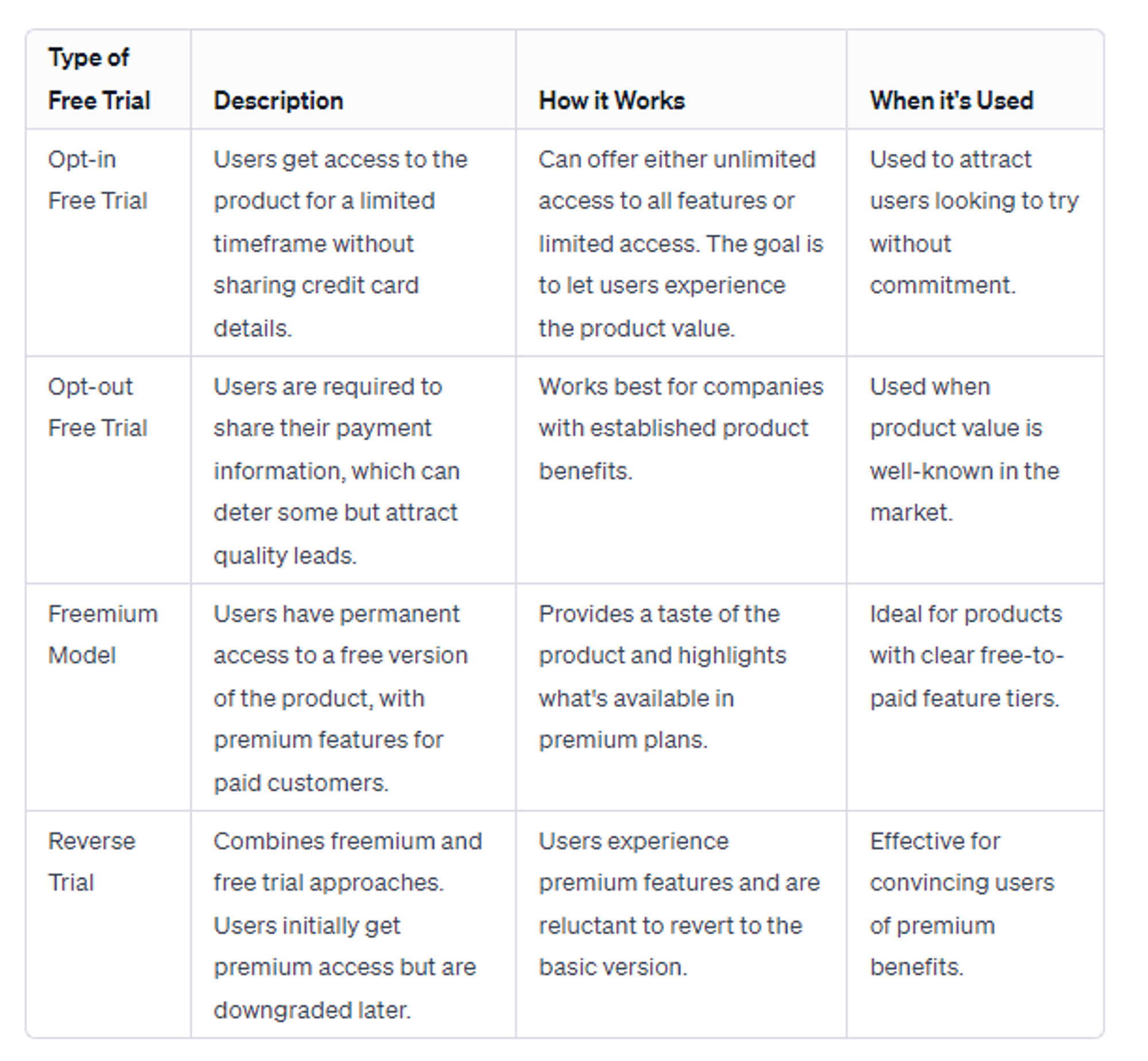
The sections below will walk you through each type of SaaS free trial!
Opt-in free trial
Opt-in free trials let users access the product for a limited time without needing to share their credit card information. Trial users may get unlimited product access or only be able to access a limited number of core features.
In either case, the goal is to get the user to experience product value before their trial period ends. Because the trial is free of charge and doesn’t require credit card details, users who aren’t ready to commit will be more likely to test the product (leading to more signups but lower conversion rates).
Opt-out free trial
Opt-out free trials only let users access the product after they’ve shared their payment information.
Much like paid trials, free trials that require credit cards can be a turn-off for many customers but will help you filter out low-probability leads from your sales pipeline.
Opt-out free trials tend to work best for companies that have an existing user base and existing product(s) within their target market.
Data from First Page Sage found that opt-out trials had a conversion rate of 48.8% (compared to only 18.2% for opt-in trials).
Freemium model
The freemium model serves as a limited free trial without time constraints. Freemium users get permanent access to the free version of the product but will need to upgrade to the paid version to access premium features.
The freemium strategy centers around the ideology that giving users a taste of the product will show them what they’re missing out on and get them to upgrade.
Freemium conversion rates typically range from 1% to 10% because of the “unlimited free trial” nature of the model.
Reverse trial
The reverse trial approach combines conventional free trials with freemium pricing models by giving users access to the premium plan when they sign up and then downgrading them to the freemium tier at the end of their trial period.
Because users started on the premium plan, they’ve already experienced the superiority it has to offer and will be less likely to go back to the bare minimum version of the product.
On the other hand, reverse trials could result in churn if downgraded users perceive the freemium version as too watered down.
How do you calculate the free trial conversion rate?
You can calculate the free-to-paid conversion rate by dividing the number of trial-to-paid users by the total number of trial users and then multiplying by 100 to get a percentage.
For example, if you had 1,400 trial users in April but only 400 converted then your free trial conversion rate for that month would be:
400 / 1,400 x 100 = 28.6%
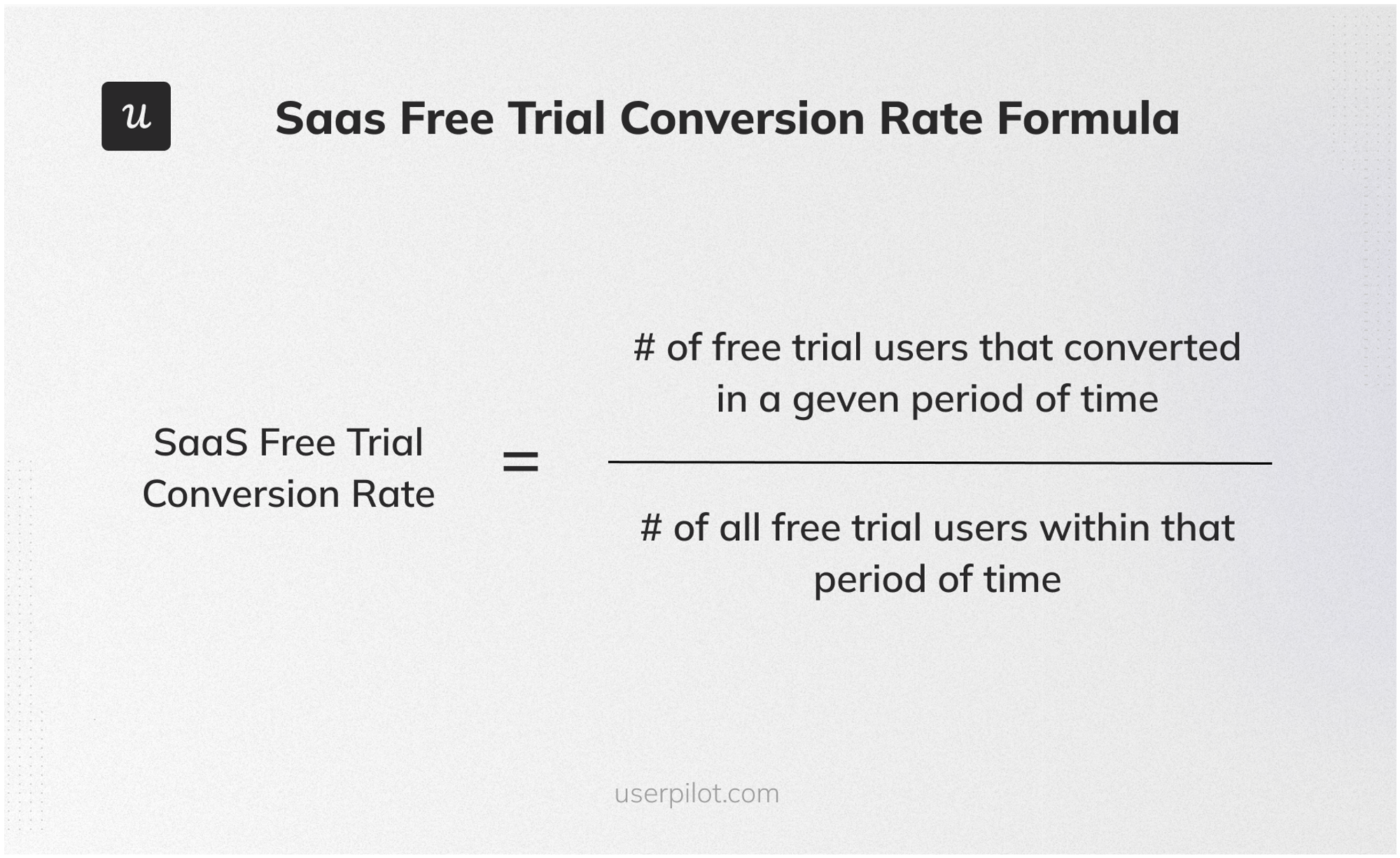
What is a good conversion rate for SaaS free trials?
While there’s no objective threshold that marks a “good conversion rate” it can still be helpful to understand the averages for each industry, business model, and trial type.
Industry averages
The average free trial conversion rates for SaaS companies are highly variable based on the industry they’re in — ranging from as low as 18.6% (Enterprise software) to as high as 29% (CRM platforms).
Here’s a breakdown of the average trial conversion rates for each SaaS industry:
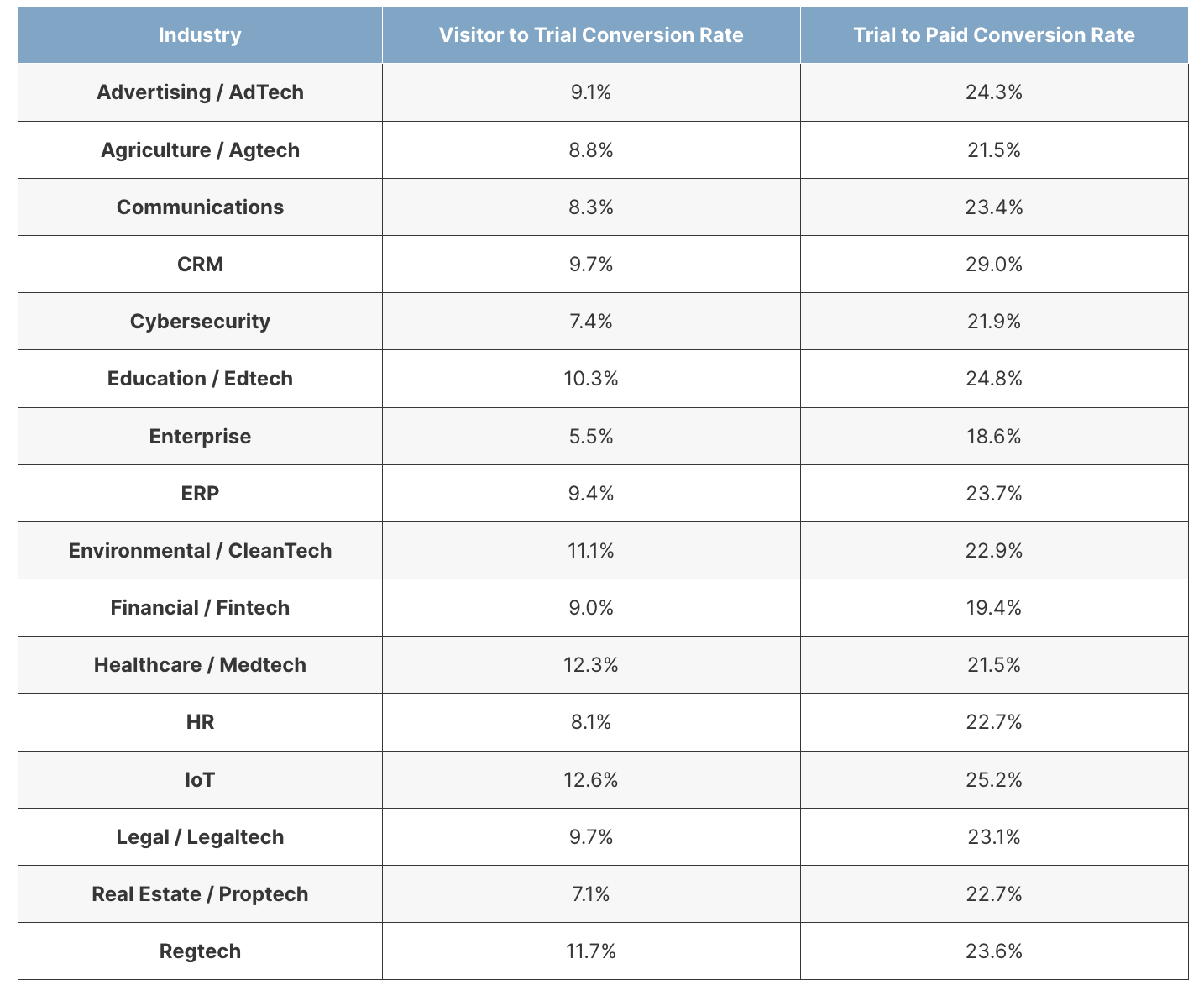
B2C vs B2B
B2C companies like Netflix and Amazon Prime tend to have higher conversion rates on trial subscriptions — 93% and 73% respectively.
While B2B products get lower conversion rates due to shorter trial periods and more complex products, their customer lifetime value tends to be higher.
For example, the subscription billing platform Chargebee only has a conversion rate of 15% but has still accrued over $100 million in lifetime revenue. Established CRM platforms like HubSpot take that a step further with over $1 billion in annual recurring revenue (ARR).
Trial types
A study by Softletter found that opt-out free trials that required credit cards averaged 50% conversion rates while opt-in free trials that didn’t require credit cards averaged 25%.
Combined with the aforementioned data from First Page Sage, it’s reasonable to expect opt-out free trials to get 2x to 3x higher conversion rates compared to opt-in trials that don’t ask trial users for credit card information.
Factors that influence SaaS free trial conversion rates
Three factors have an outsized impact on the conversion rates of SaaS free trials:
- Free trial period
- Pricing structure
- User experience
We’ll give you a closer look at each one in the sections below!
The free trial period
Free trial length ranges between one week to one month for the vast majority of SaaS companies.
There are pros and cons to each side of the spectrum.
Longer trial periods give users more time to explore the product and grasp its full value. Shorter trial periods create a sense of urgency which drives users to take immediate action before their access expires.
The ideal trial length is entirely dependent on the product, its key features, and how complex it is.
Pricing structure
SaaS pricing models also play a key role in trial conversion rates.
This comes down to the balance between perceived value and affordability. If users find a product too expensive, they may be reluctant to convert even if they find it valuable.
On the other hand, a product that’s too cheap may lead users to question its quality.
Usage-based pricing is a potential remedy since it ties the price of the product to the customer’s usage.
User experience
The user experience encompasses everything from the initial onboarding process to customer service interactions through the trial period.
As such, your customer education strategy, product communication, and overall ease of use can be deciding factors on whether or not a trial user converts.
If you improve the user experience then your trial conversion rate will most likely increase as well.
Best practices for converting free trial users
Now that you’re familiar with what the free trial conversion rate is, how to calculate it, and the factors that influence it, the next step is to increase it.
Below are four best practices that you can use to convert more free trial users into paid subscribers!
Find the right balance of product features included in your free trial
Striking the balance between how many features you include in your free trial is a delicate task.
If you have too few features, then customers might not perceive enough product value and go elsewhere once their trial ends.
Offering too many features could confuse new users and lead to a bad user experience which in turn causes high churn rates.
The best approach is to analyze existing product usage patterns and see which features your power users are regularly using. You can then include these core features in your free trials to give you the best chance of the user converting into a paid plan.
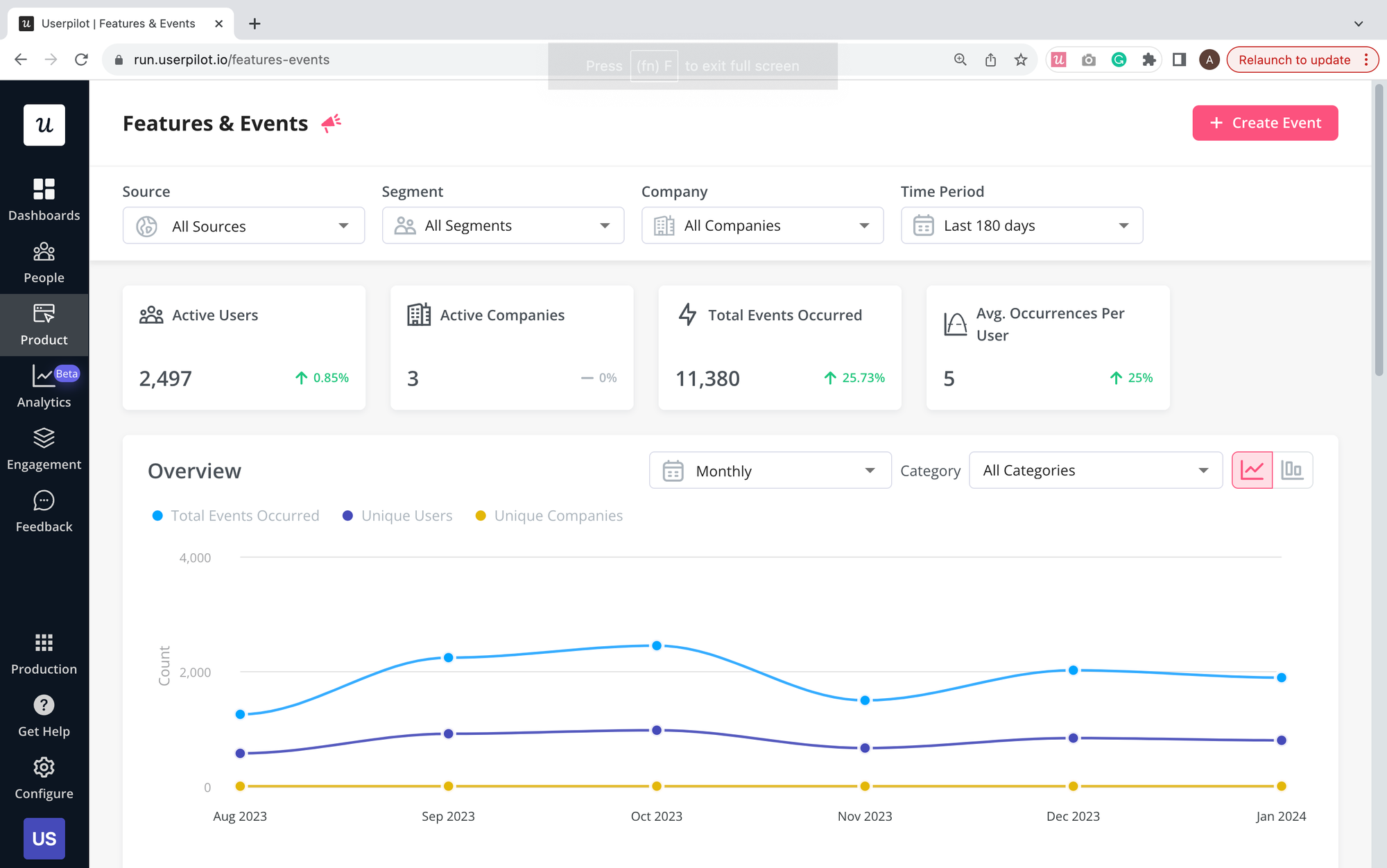
Help free trial users achieve success with in-app guidance
Leaving users to their own devices can lead to prospects who barely engage with the product during their trial period or get stuck on a confusing step and drop out of the funnel entirely.
Instead, it’s best to engage new users through contextual in-app guidance.
The goal should be to reduce the time to value by helping users navigate each stage of their adoption journey.
One example would be to trigger interactive walkthroughs when a free user interacts with a feature for the first time during their trial period.
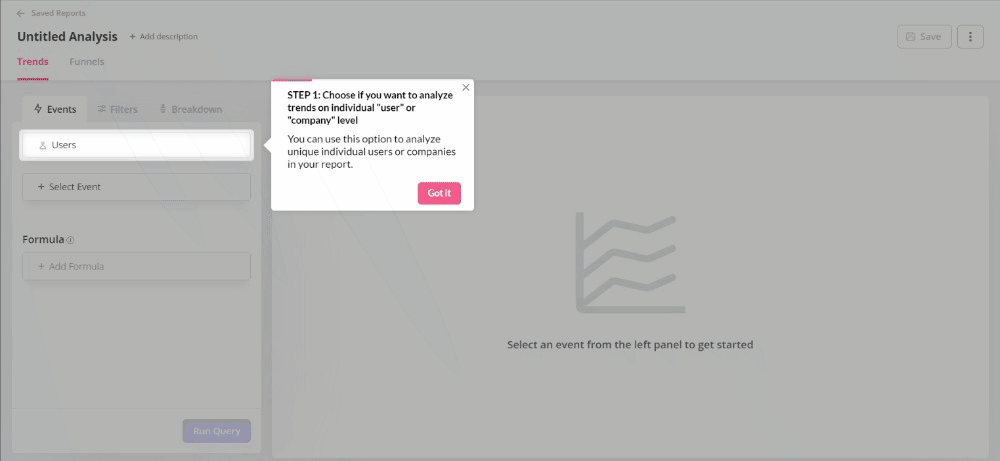
Offer self-service support to free users through a resource center
Offering self-service will empower users to solve any problems they run into during their trial period instead of wasting precious time waiting for a support representative. This will also reduce the impact of friction points that could affect their trial onboarding.
There are multiple formats you could use to offer self-service such as written help articles or video tutorials.
Embedding these into an in-app resource center will make information more easily accessible to your trial users.
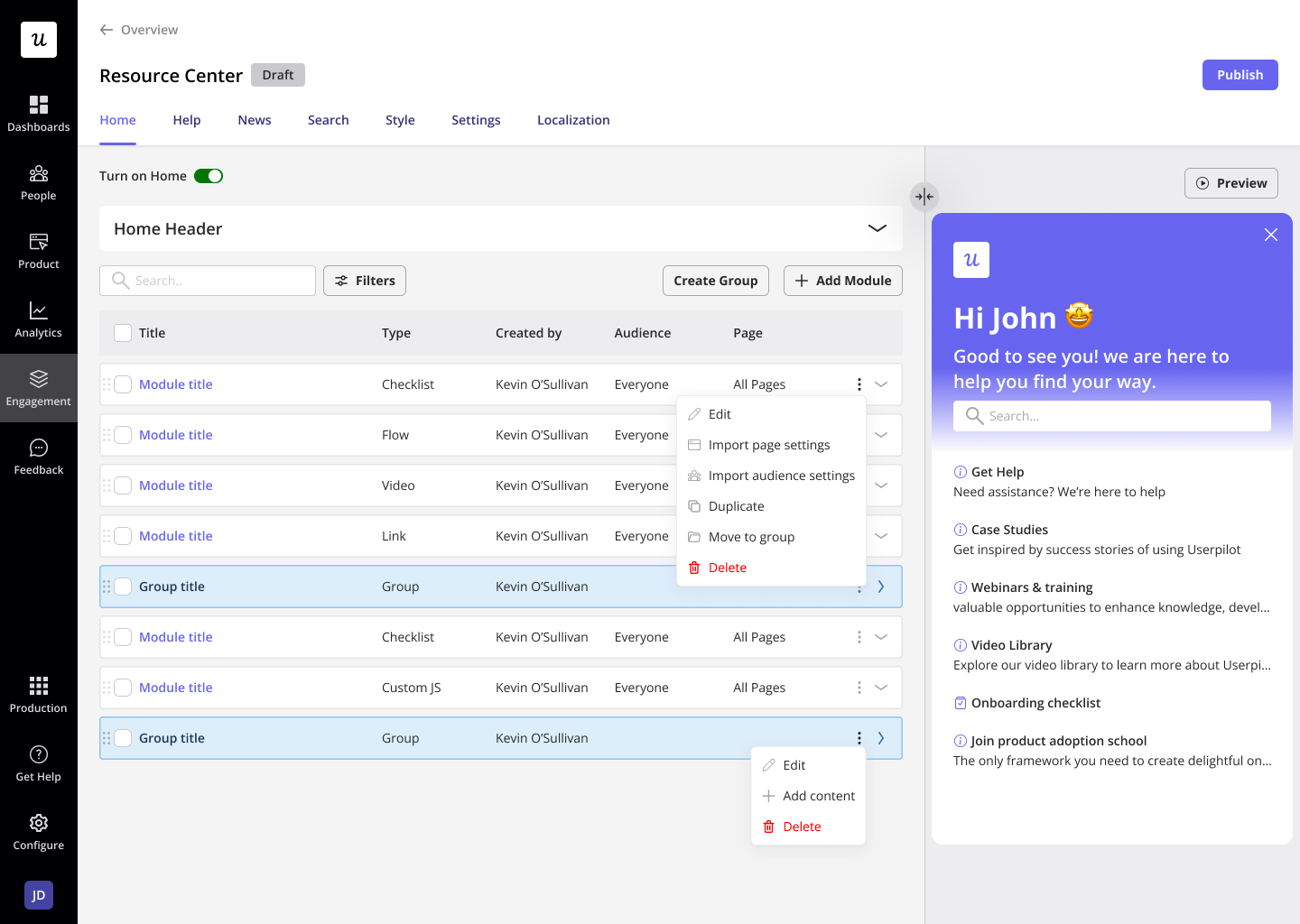
Trigger upgrade prompts contextually to improve free trial conversions
Turning free users into paying customers is a lot easier when you prompt their premium upgrade at high-intent moments.
Contextual timing is one of the most effective upselling techniques because it capitalizes on existing interest rather than trying to persuade users who aren’t ready to upgrade.
A great example of this is how Loom displays upgrade prompts whenever users record a video that exceeds the freemium time limit:

Conclusion
As you can see, your trial-to-paid conversion rate is easy to calculate but tricky to optimize because it’s heavily impacted by three distinct factors.
If you stick to the best practices in this guide and offer a positive trial experience then you’re bound to see conversion rates rise!
Ready to improve your free trial conversion rates through in-app guidance? Get your free Userpilot demo today and we will show you how!







